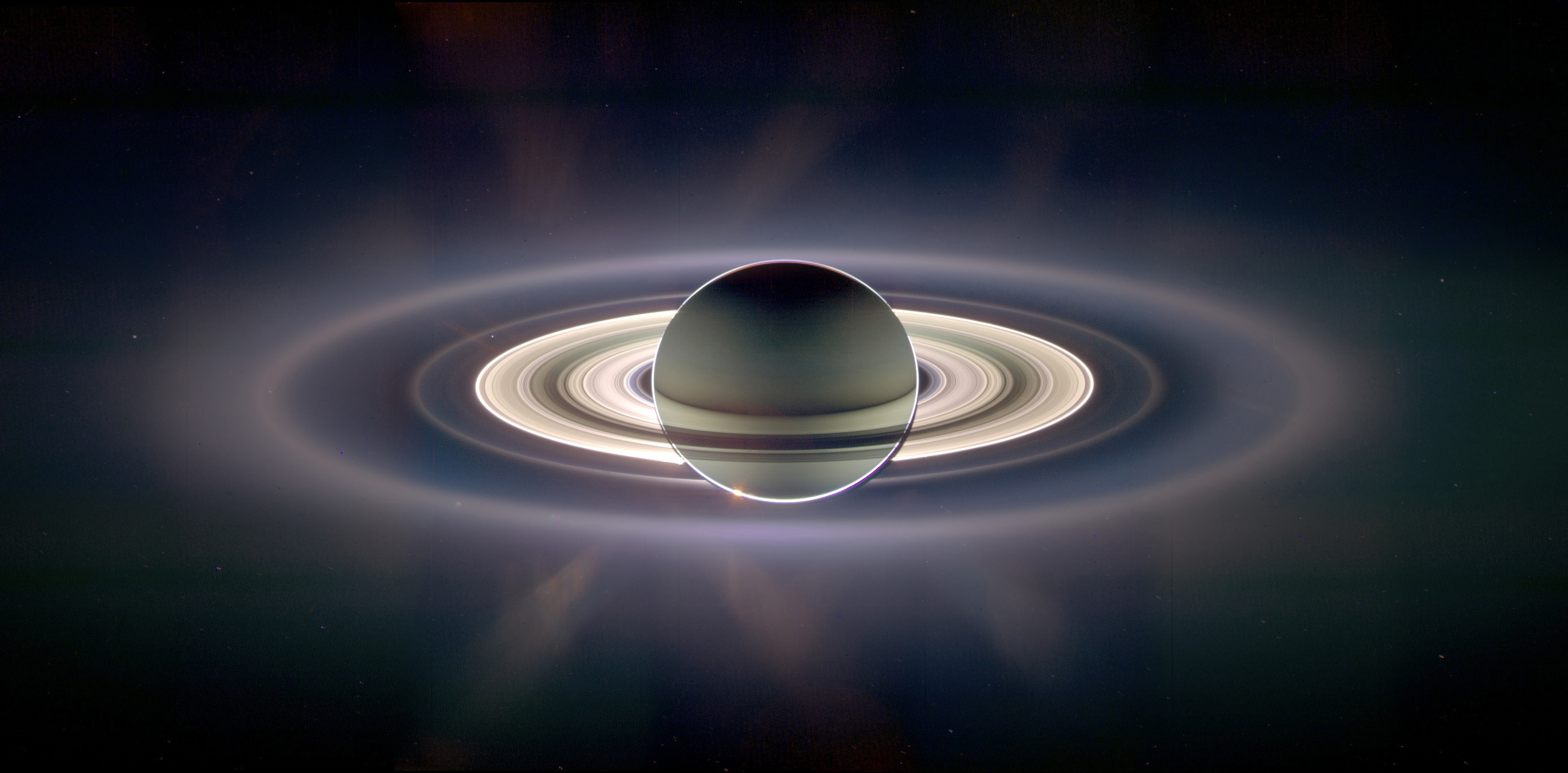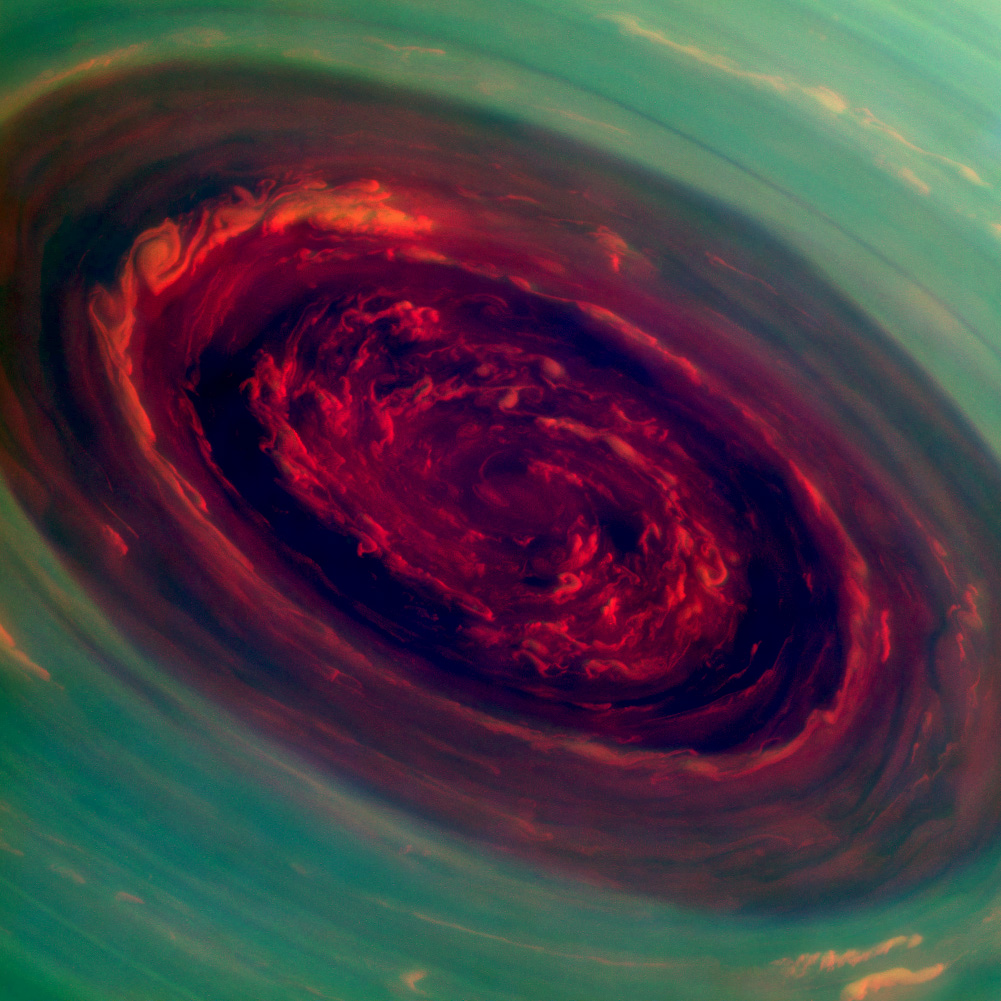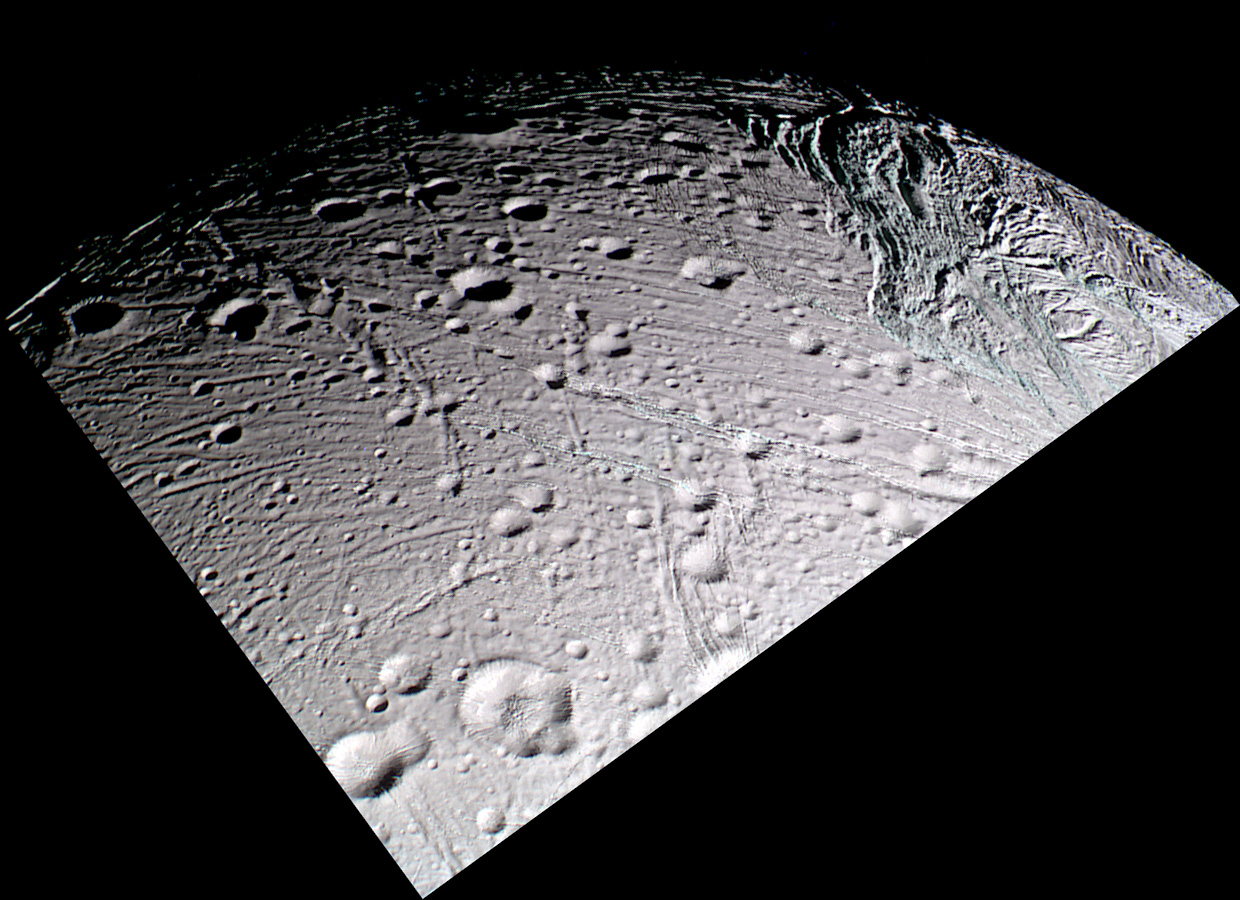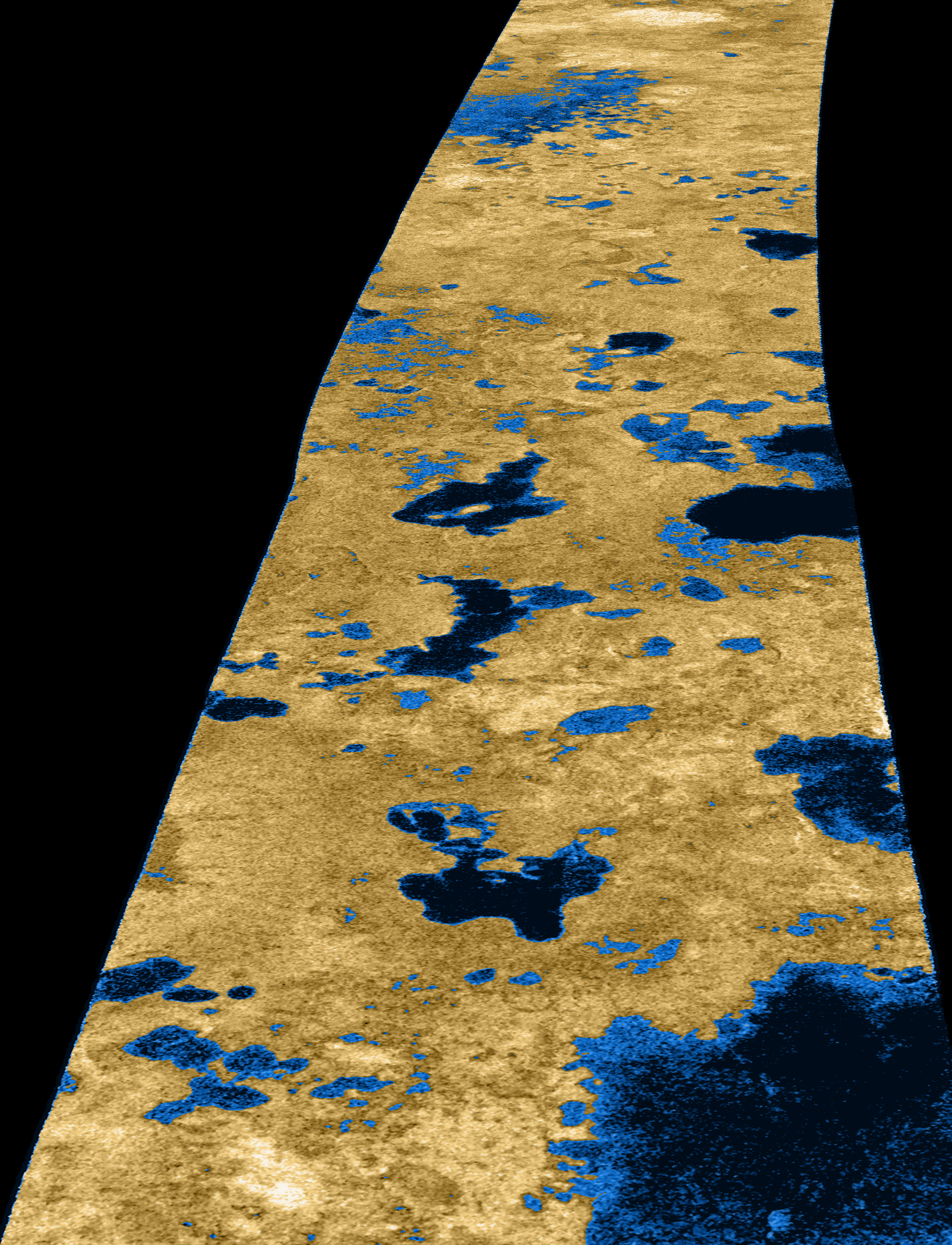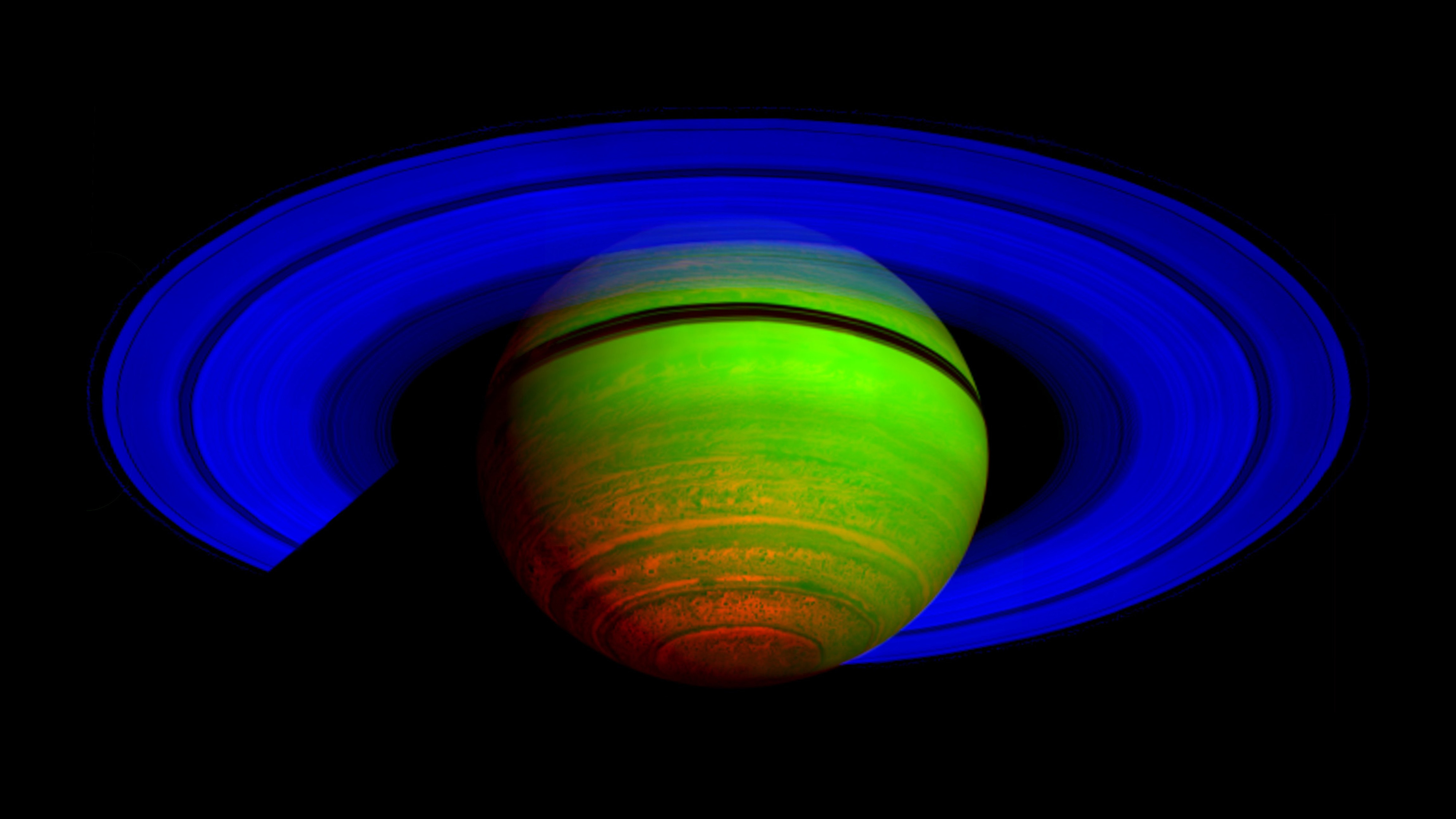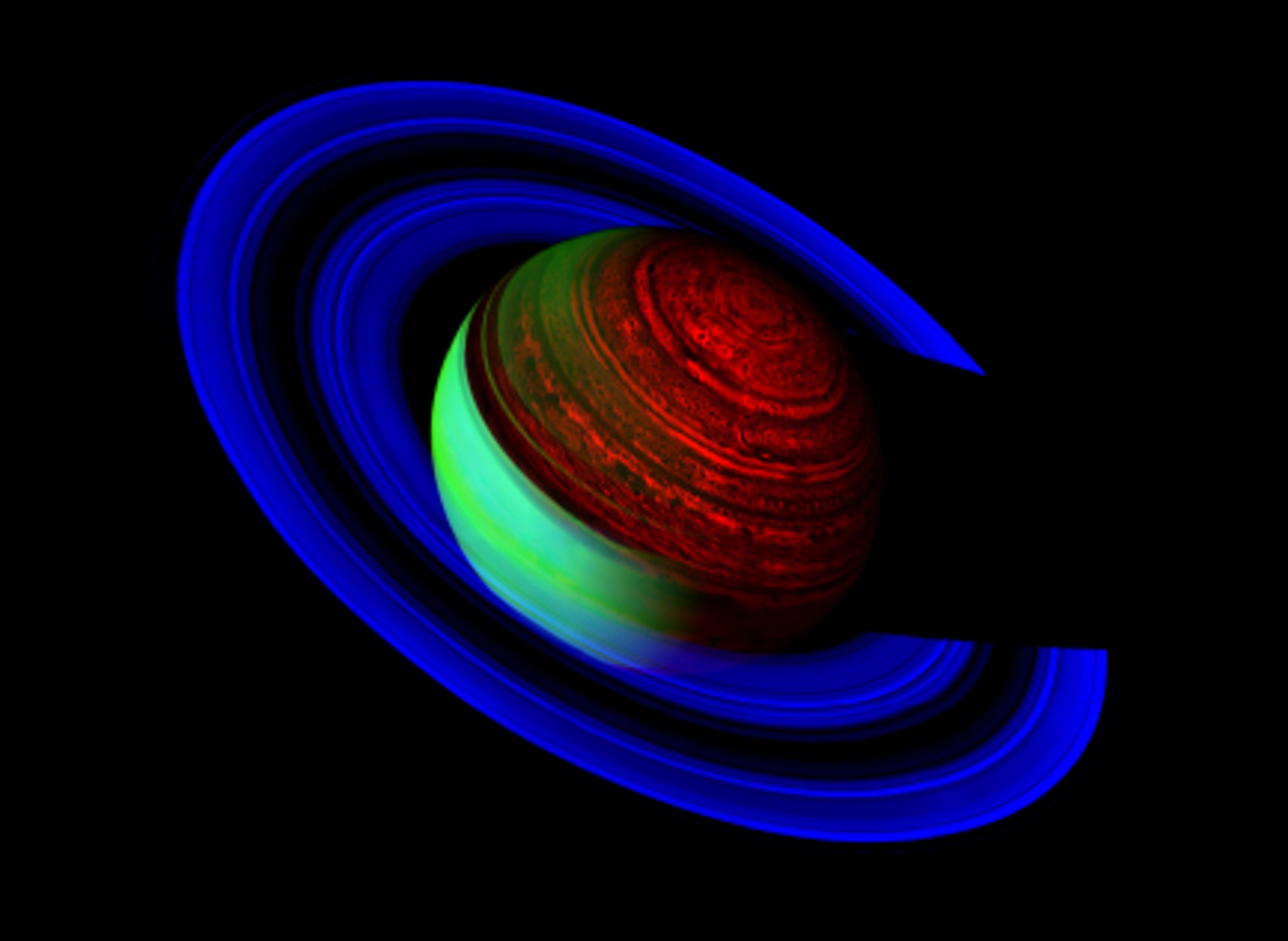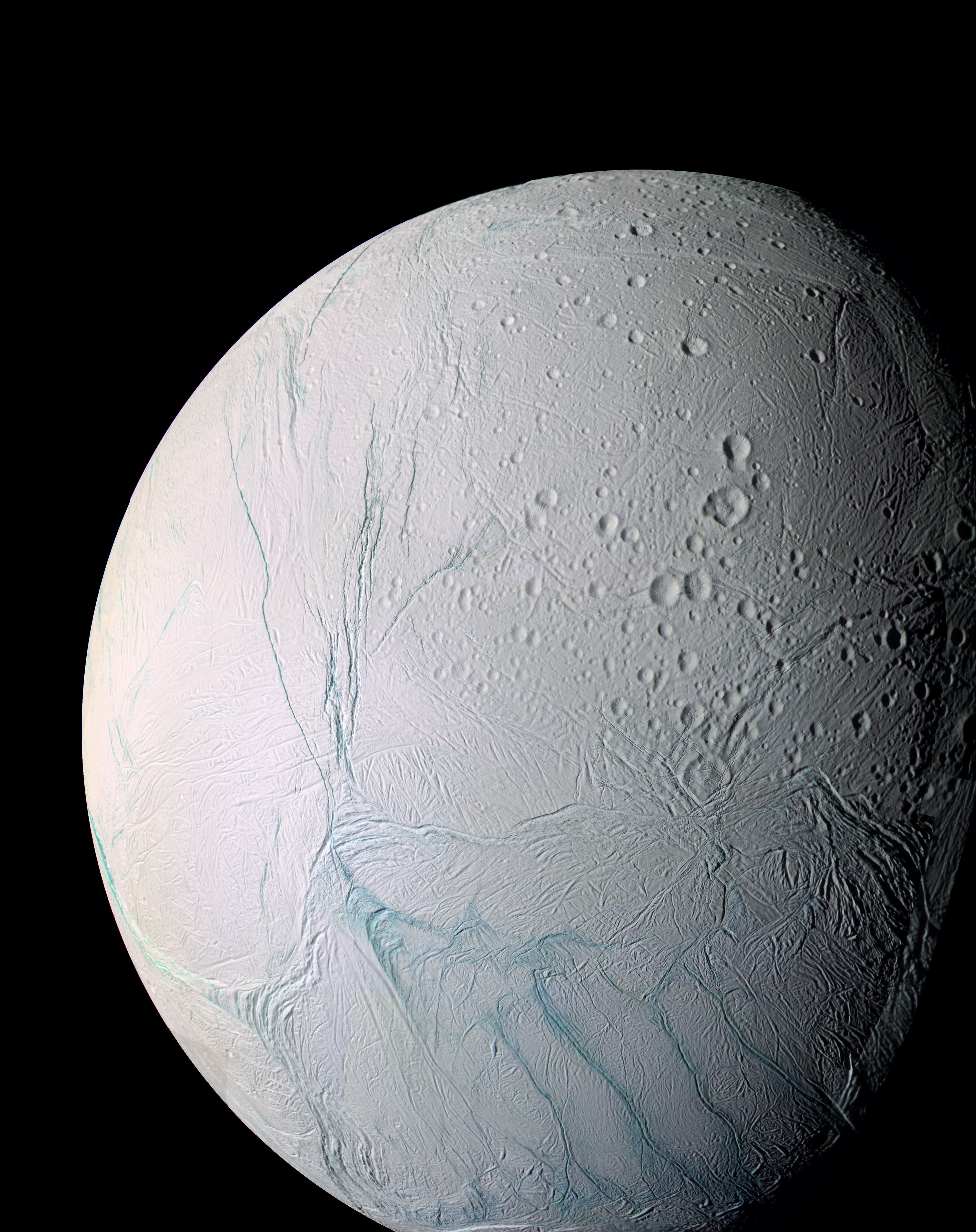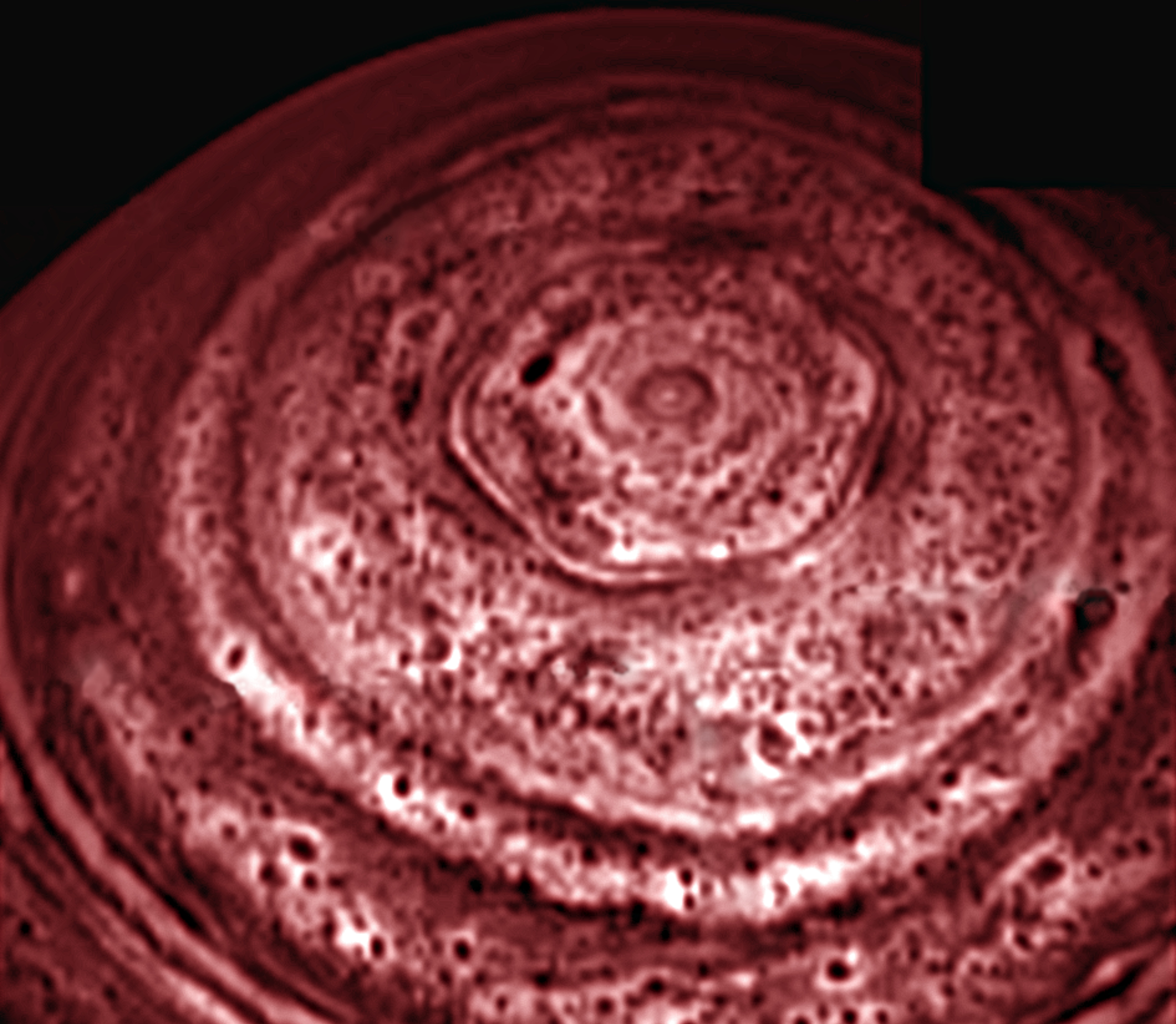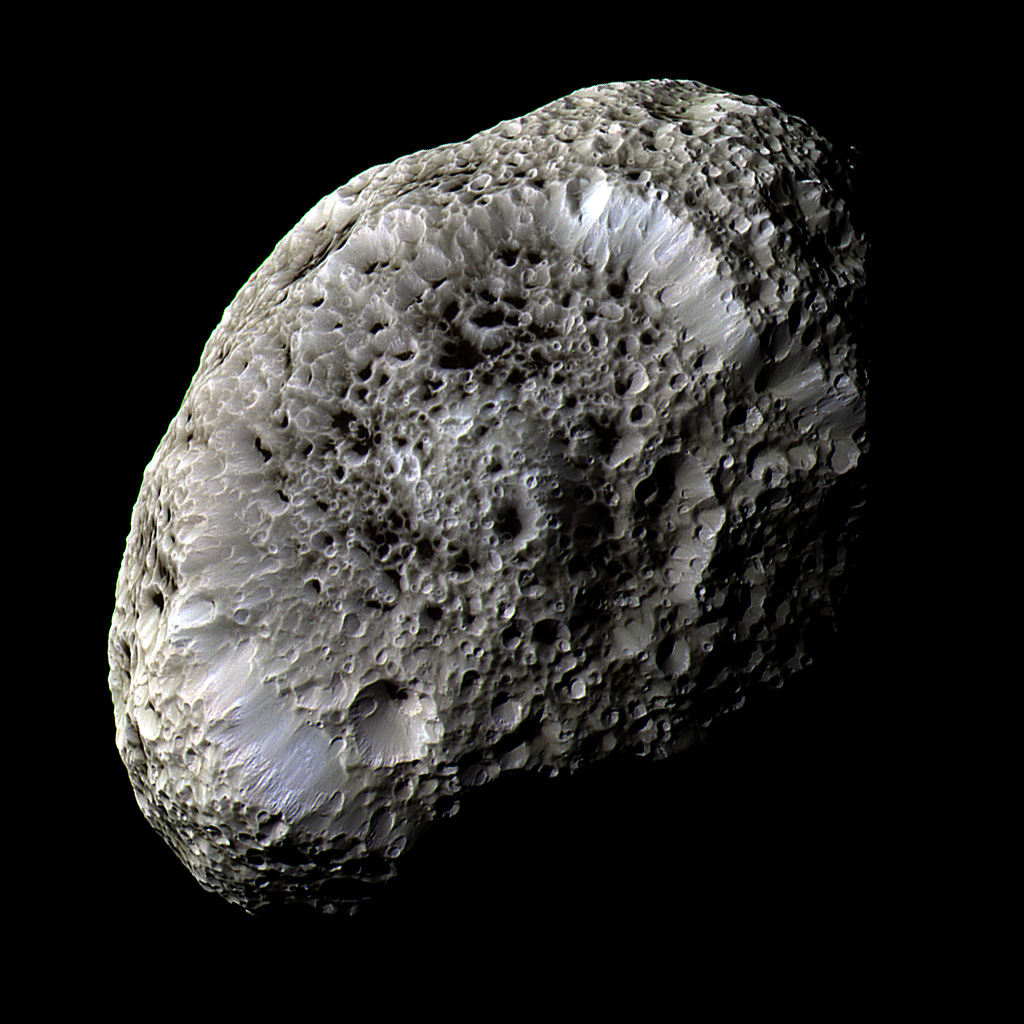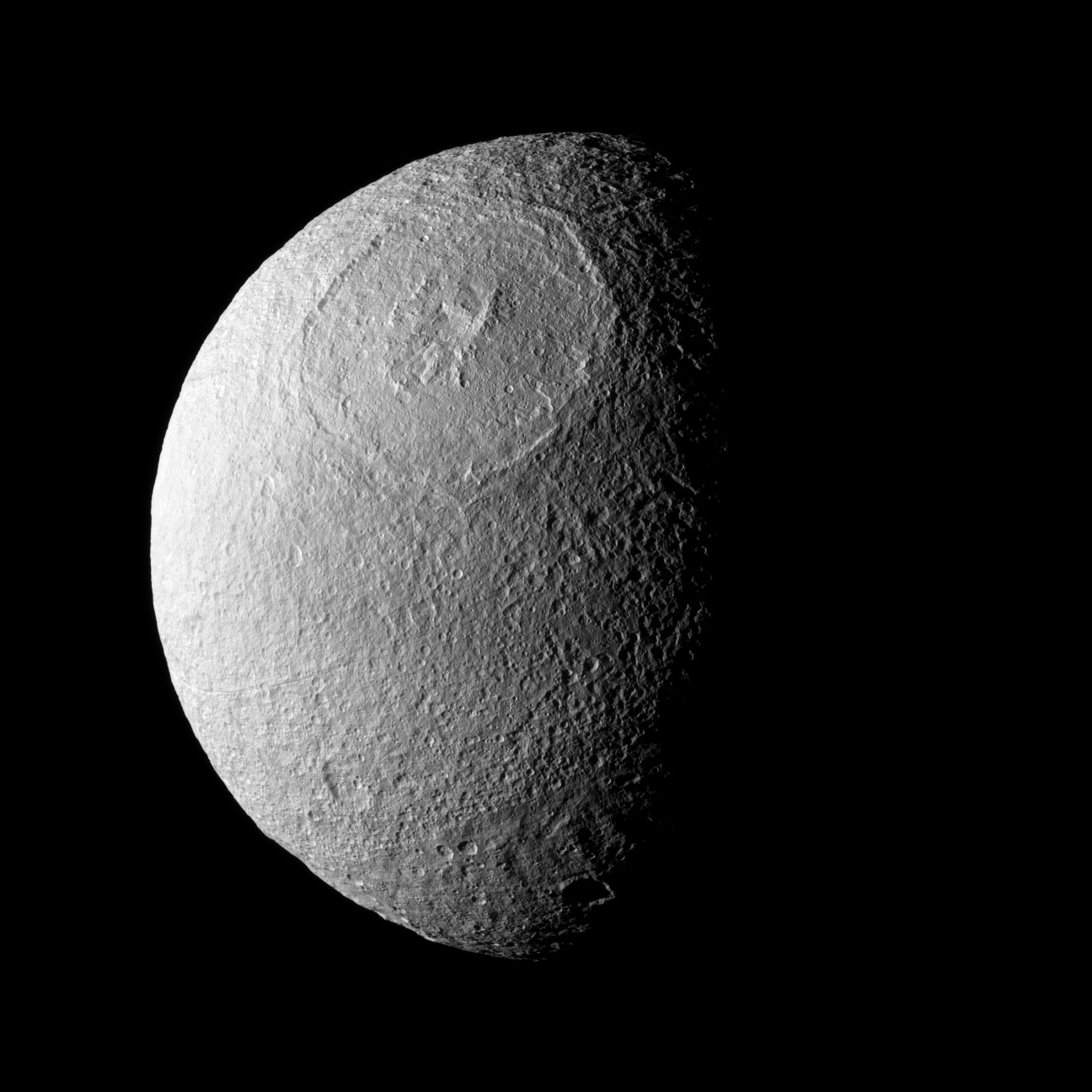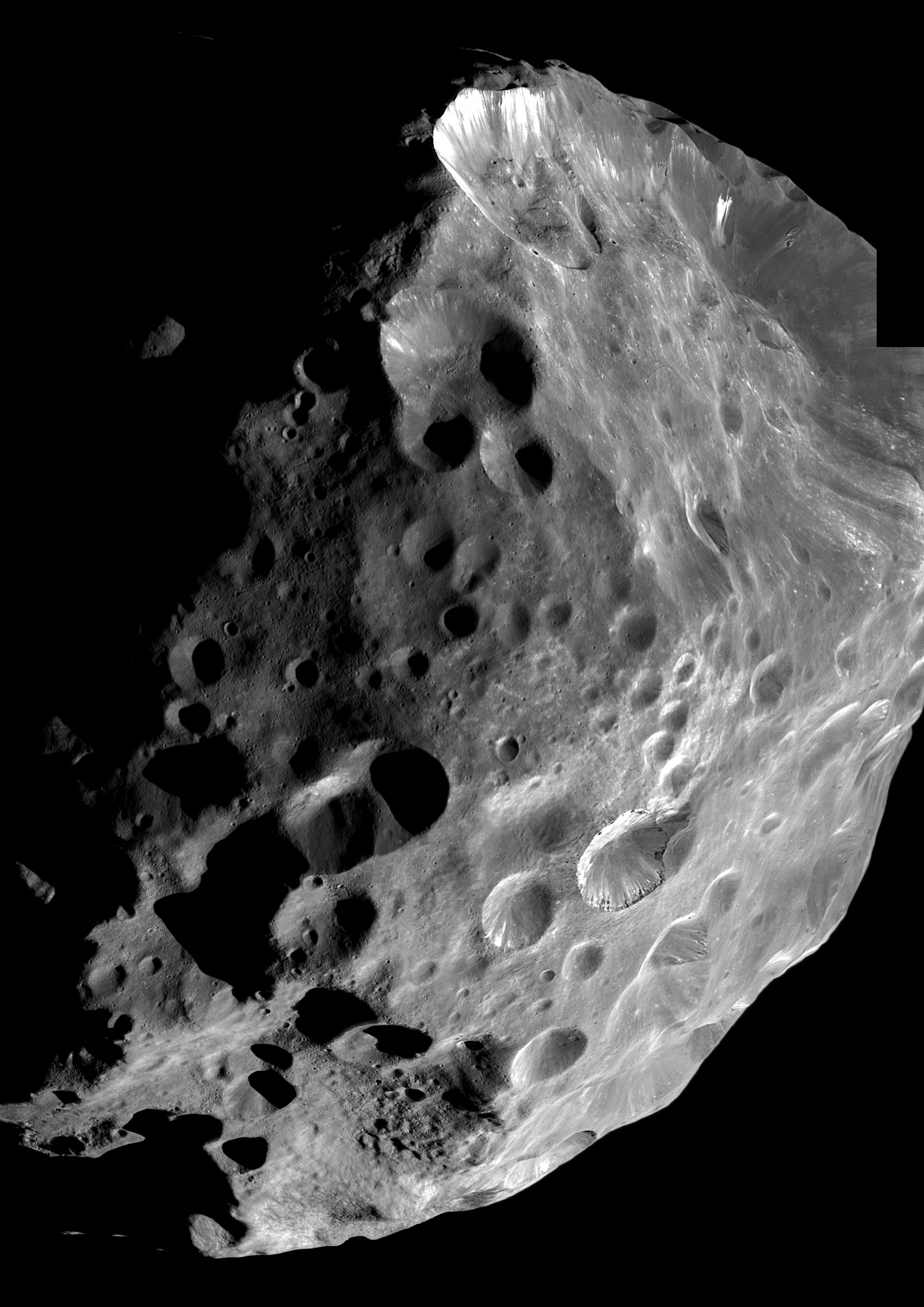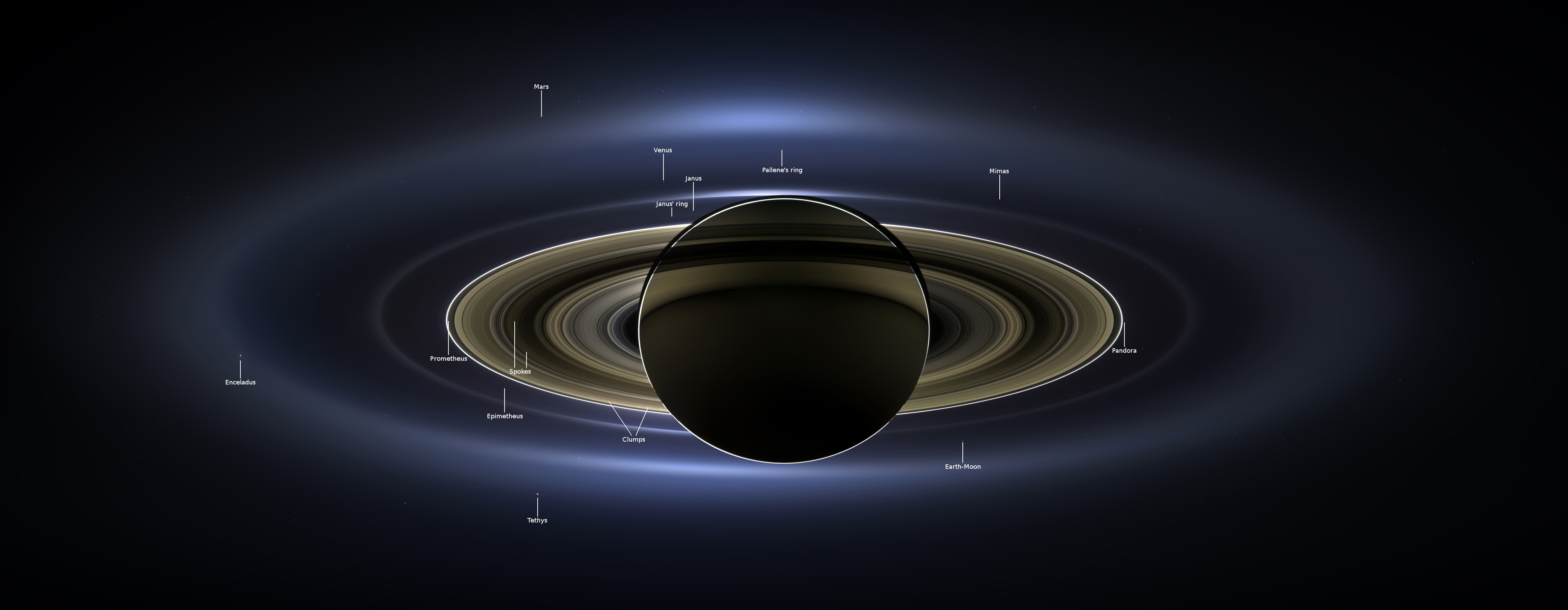
Cassini: Amazing images and even more amazing science
The Cassini orbiter has been in orbit around Saturn since June 2004. Launched aboard a Titan IVB rocket from Cape Canaveral Air Force Station on October 15, 1997, it was originally dubbed Cassini-Huygens as the Huygens probe was carried along with Cassini to the Saturnian system.
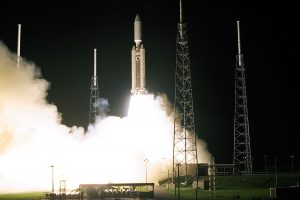
The voyage to Saturn is a long one as Saturn, on average, is 1.43 billion miles from earth. The rocket used to launch Cassini-Huygens was the most powerful in the NASA arsenal at that time, but it was still not powerful enough to send Cassini-Huygens on a direct flight straight to Saturn. Instead NASA utilized a technique called “gravity assist” a number of times during Cassini’s trip to Saturn. A gravity assist uses the gravitational pull of a body in space to increase the vehicle’s speed as it flies by. The flyby can also be used to alter the course of the spacecraft.
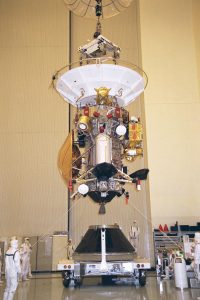
On its trip to Saturn, Cassini-Huygens flew past Venus, twice, Earth once, and Jupiter once. To this day Cassini still uses Gravity Assists to preserve fuel, using the Saturnian moons and Saturn itself to help maintain the speed of the spacecraft. For example, when flying by Saturn’s moon Titan on April 7, 2014, the probe gained speed as it approached Titan, and due to the flight path, while it lost energy pulling away from Titan its speed post encounter was the same as before the encounter started, allowing a scientific flyby using no propellant.
The Cassini orbiter has 12 instruments on board. According to NASA, “the science instruments can be classified in a way that can be compared to the way human senses operate. Your eyes and ears are ‘remote sensing’ devices because you can receive information from remote objects without being in direct contact with them. Your senses of touch and taste are ‘direct sensing’ devices. Your nose can be construed as either a remote or direct sensing device. You can certainly smell the apple pie across the room without having your nose in direct contact with it, but the molecules carrying the scent do have to make direct contact with your sinuses.”
Cassini’s instruments allow it to analyze remotely, it is an orbiter after all, but it is not limited to only visual examinations as it uses radar, radio, and spectrometers to analyze from a distance. And for close encounters, the field and particle instruments measure things in the immediate vicinity of the spacecraft such as Magnetic fields, mass, electrical charges, and densities of atomic particles, along with the composition and quantity of dust particles, and the strength of electrically charged gas (Plasma).
The spacecraft’s instruments, propulsion system, maneuvering systems, and communication equipment all require power to operate. Providing the power are three Radioisotope Thermoelectric Generators, also referred to as RTGs. The RTGs generate 885 watts of power. As a comparison, the laptop I am writing this article on has a 126 watt power supply, and a 42” LCD Television uses about 120 watts of electricity.
Solar panels were not an option as due to the amount of power required to operate the spacecraft and it’s instruments. Using the most advanced solar panels available at that time, that could have met the power requirements, would have required them to be so large it would have made the spacecraft too heavy to launch.
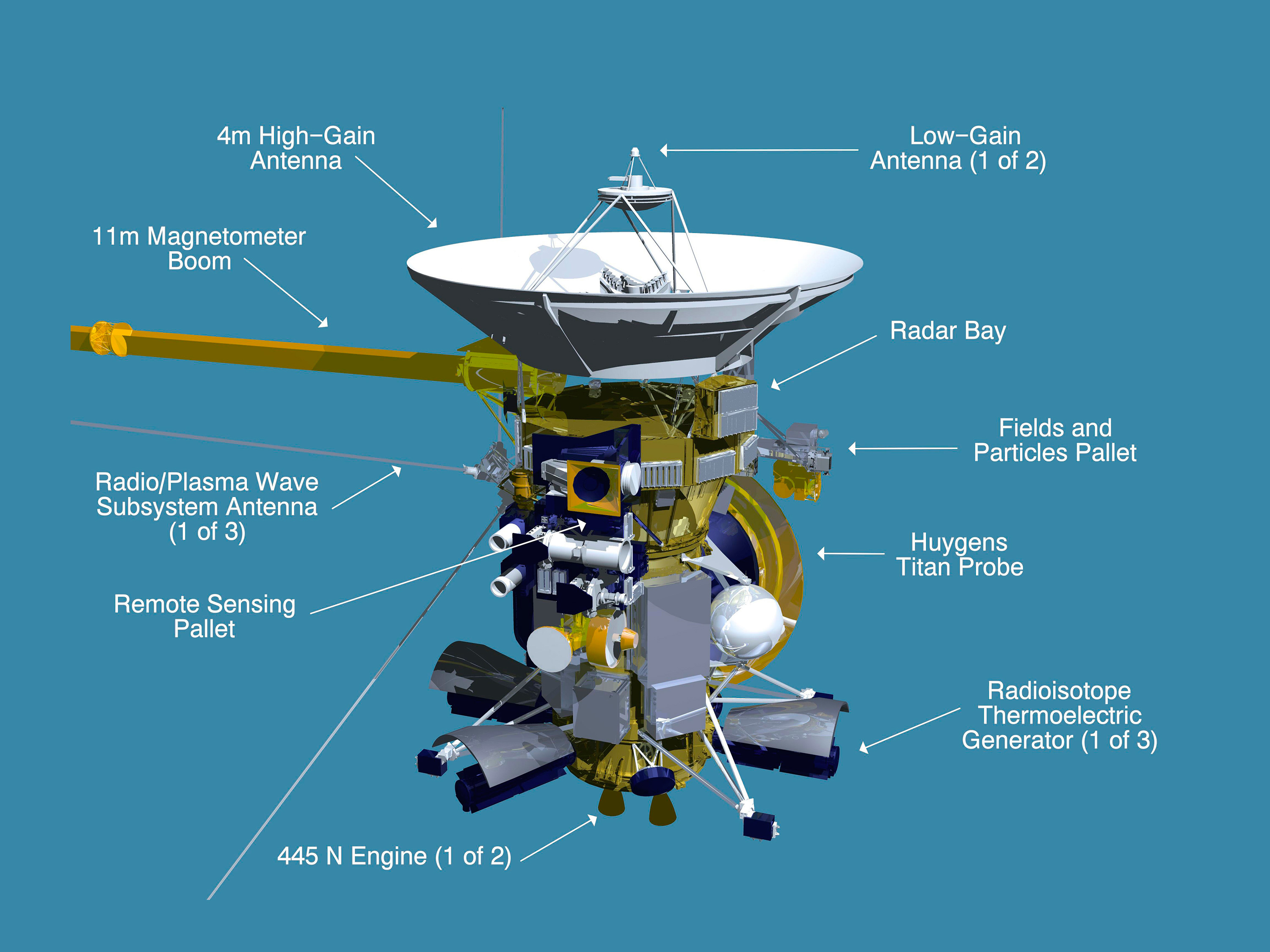 Cassini is still in operation today, having completed its primary mission in June 2008 as a healthy spacecraft, it was decided that a secondary mission, dubbed the Cassini Equinox Mission, was added. That mission lasted until September 2010, and once again with a healthy spacecraft still providing valuable data back to scientists on Earth, a third mission called the Cassini Solstice Mission was added. That mission was recently funded through its scheduled end of mission in September 2017, so there is still a lot of excitement coming from this reliable spacecraft over the next 3 years. The mission’s extension is named for Saturn’s summer solstice which will be occurring in May 2017. The northern summer solstice marks the beginning of summer in the northern hemisphere and winter in the southern hemisphere. Since Cassini arrived at Saturn just after the planet’s northern winter solstice, the extension will allow for the first study of a complete seasonal period.
Cassini is still in operation today, having completed its primary mission in June 2008 as a healthy spacecraft, it was decided that a secondary mission, dubbed the Cassini Equinox Mission, was added. That mission lasted until September 2010, and once again with a healthy spacecraft still providing valuable data back to scientists on Earth, a third mission called the Cassini Solstice Mission was added. That mission was recently funded through its scheduled end of mission in September 2017, so there is still a lot of excitement coming from this reliable spacecraft over the next 3 years. The mission’s extension is named for Saturn’s summer solstice which will be occurring in May 2017. The northern summer solstice marks the beginning of summer in the northern hemisphere and winter in the southern hemisphere. Since Cassini arrived at Saturn just after the planet’s northern winter solstice, the extension will allow for the first study of a complete seasonal period.
So what has Cassini accomplished so far? Well the amazing pictures it has returned to us to see are certainly one of its hallmarks, but the scientific discoveries it has made are also very impressive. We would need to dedicate the entire issue of this magazine, if not more, to Cassini if we were to list them all with any detail, so I’ll just touch on a few.
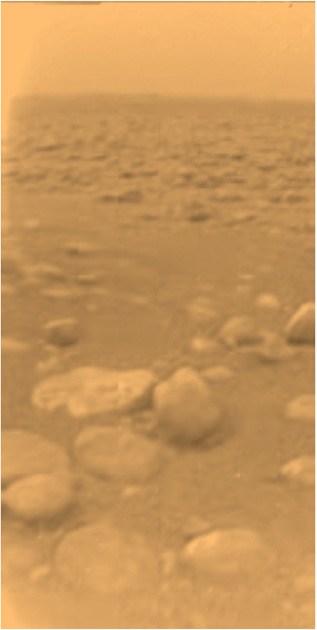
One of the mission’s primary objectives was to deliver the Huygens probe to Saturn’s moon Titan. That task was accomplished when the Huygens probe entered the thick atmosphere of Titan and landed via parachute on January 14, 2005. The probe punched a hole some 12cm deep in the surface upon landing. It was then pulled out of the hole by its parachute system and it slid another 30- 40 cm along the surface before coming to a rest. Scientists originally had believed the surface to be soft on top; however now it is believed there is a crust on top of that soft layer. The soft layer is believed to be more like a mud than a dry grainy composition. Huygens transmitted back 350 pictures of its descent and of the surface, along with scientific data, until Cassini was no longer in range to receive data from it. Cassini was the relay to Earth for the Huygens probe. The data sent back included the first ever images of Titan’s surface, remember that with thick hazy atmosphere, you cannot actually see the surface from above.
Recently Cassini measured the depth of Titan’s second largest sea, Ligeia Mare, to be about 560 feet in depth. Since Titan’s water bodies are mostly Methane the spacecraft uses radar to “see” first through the smoggy atmosphere of Titan, and then through the lake itself to find the bottom.
Cassini also discovered a huge hurricane swirling around Saturn’s north pole just last year. Even though Cassini has been in orbit since 2004, the polar region was dark due to the northern hemisphere being in winter. The composite infrared spectrometer and the visual and infrared mapping spectrometer detected a massive vortex quite some time ago. However it could not be seen until recently with winter ending in the northern hemisphere. “Such a stunning and mesmerizing view of the hurricane-like storm at the north pole is only possible because Cassini is on a sportier course, with orbits tilted to loop the spacecraft above and below Saturn’s equatorial plane,” said Scott Edgington, Cassini deputy project scientist at NASA’s Jet Propulsion Laboratory in Pasadena, Calif. “You cannot see the polar regions very well from an equatorial orbit. Observing the planet from different vantage points reveals more about the cloud layers that cover the entirety of the planet.”
Cassini changes its orbital inclination for such an observing campaign only once every few years. Because the spacecraft uses flybys of Saturn’s moon Titan to change the angle of its orbit, the inclined trajectories require attentive oversight from navigators. The path requires careful planning years in advance and sticking very precisely to the planned itinerary to ensure enough propellant is available for the spacecraft to reach future planned orbits and encounters.
In comparison to hurricanes on Earth, the one on Saturn is gigantic with the eye of the storm being roughly 50 times larger than the eye of a hurricane on Earth at approximately 1,250 miles across. Wind speeds at the outer edge of the storm are around 340 MPH. Unlike hurricanes on Earth, this storm does not migrate; it is stuck in what is essentially a stationary position indefinitely. On Earth, hurricanes tend to drift northward because of the forces acting on the fast swirls of wind as the planet rotates. The one on Saturn is already as far north as it can be. The end result is a strong swirling storm, with no place to go.
“The polar hurricane has nowhere else to go, and that’s likely why it’s stuck at the pole,” said Kunio Sayanagi, a Cassini imaging team associate at Hampton University in Virginia.
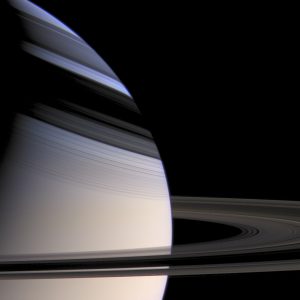
Unrelated to the hurricane in the polar region, a massive thunder and Lightning storm was detected in Saturn’s northern hemisphere. After forming, the turbulent head of the storm moved west and spawned a clockwise rotating vortex that followed the same path but more slowly. In a matter of just a few months the storm encircled the entire planet, stretching some 190,000 miles, with thunder and lightning raining down on the surface the whole time. The storm lasted for 267 days! Along with amazing photographs of the massive storm, Cassini’s near infrared camera detected a combination of water and ammonia ice in the storm clouds. The storm ended when the head of the storm ran into its own “tail” after encircling the planet and the circulation eventually came to a stop.
Another recent discovery is that Saturn’s moon, Enceladus, has an ocean of liquid water beneath its frozen crust. Scientists first hypothesized the existence of liquid below the surface when a Cassini Flyby in 2005 showed water vapor and ice spewing from vents near the moon’s south pole. Scientists recently provided more evidence of this ocean’s existence by measuring the gravitational variances of the moon. Utilizing data from three flybys of the 19 close encounters Cassini has made with Enceladus.
The gravitational tug of Enceladus, as with any other celestial body, alters Cassini’s flight path. Variations in the gravity field, such as those caused by mountains on the surface or differences in underground composition, can be detected as changes in the spacecraft’s velocity as measured from Earth.
The south pole of Enceladus has a surface depression that causes a decrease in the local tug of gravity. However, the decrease is less than expected given the size of the depression. This leads researchers to conclude the depression’s effect is partially offset by a high-density feature in the region, beneath the surface. “The Cassini gravity measurements show a negative gravity anomaly at the south pole that however is not as large as expected from the deep depression detected by the onboard camera,” said the paper’s lead author, Luciano Iess of Sapienza University of Rome. “Hence the conclusion that there must be a denser material at depth that compensates the missing mass: very likely liquid water, which is seven percent denser than ice. The magnitude of the anomaly gave us the size of the water reservoir.”
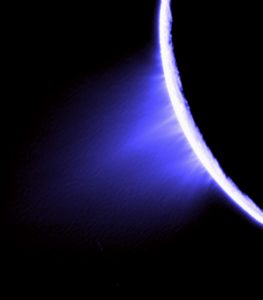
Of course, with water, the possibility of some sort of life on Enceladus is raised significantly. “Material from Enceladus’ south polar jets contains salty water and organic molecules, the basic chemical ingredients for life,” said Linda Spilker, Cassini’s project scientist at JPL. “Their discovery expanded our view of the ‘habitable zone’ within our solar system and in planetary systems of other stars. This new validation that an ocean of water underlies the jets furthers understanding about this intriguing environment.”
What lies ahead for Cassini? At the time of this writing Cassini just finished its closest remaining flyby of the smoggy moon Titan on April 7. Cassini whizzed by Titan at a targeted 598 miles above the surface while travelling at 13,000 MPH! The close pass enabled Cassini’s Ion and Neutral Mass Spectrometer, or INMS, to get a good whiff of the atmosphere, allowing further analysis of the composition of the atmosphere. Also Cassini’s Composite Infrared Spectrometer, or CIRS, continued to map the vertical structure of Titan’s atmosphere in far-infrared wavelengths of light. Scientists are watching for seasonal changes as the moon’s southern hemisphere heads into its several-years-long winter season. Also the Visible and Infrared Mapping Spectrometer, or VIMS, extended its global and regional map coverage of Titan. VIMS observed the moon’s extended atmosphere as it passes in front of the bright red star Antares. These measurements of well-known stars provide a useful probe of the structure and density of the atmospheres of Titan and Saturn. Cassini will fly by Titan again on May 17 and six more flybys of Titan will occur this year.
Cassini, as previously noted, is now in a more polar orbit, and will make passes through Saturn’s ring plane many times over the next three-plus years of the Solstice mission. Some of these passes will actually be between the rings and the planet, a path no other mission has done before. By diving between Saturn and its rings, the team hopes to obtain in depth knowledge of the gas giant. Cassini will study the internal structure of Saturn, its magnetic fluctuations, and the mass of the rings during these trips between the planet and its rings.
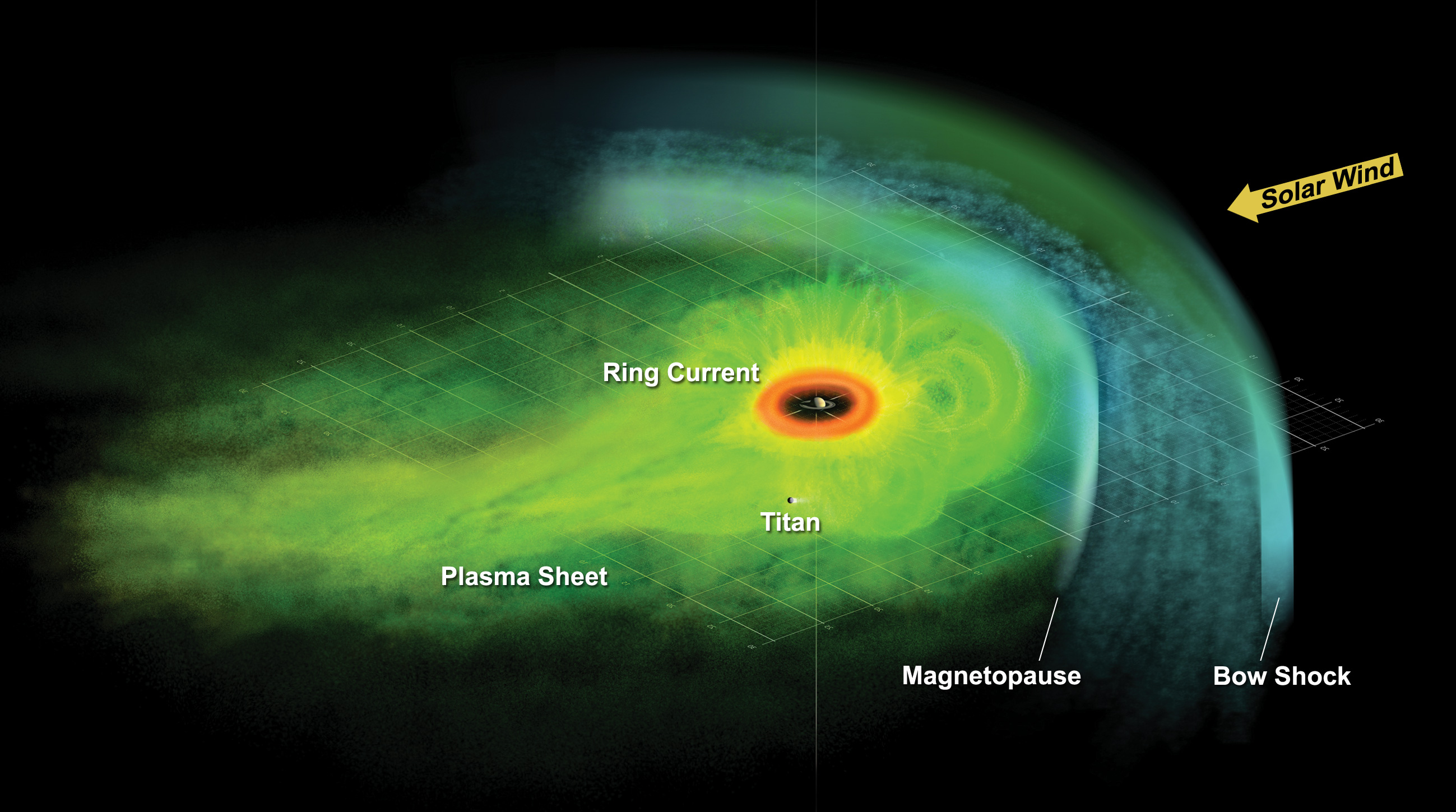
More flybys of Saturns moons will occur of course, they will be continued to be used as gravity assists to propel the spacecraft and redirect its flight path of course, but these flybys will also serve scientific purposes.
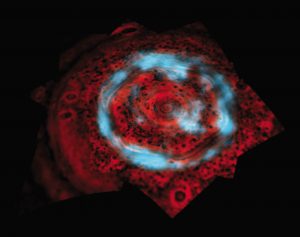
The recent discoveries of the icy plumes shooting from the surface, and possible seas below the surface of Enceladus make it a focal point for further investigation. As noted earlier, investigation of these plumes revealed that the spray contains complex organic chemicals. Tidal heating is keeping Enceladus warm, and hotspots associated with the plumes have been pinpointed. With heat, organic chemicals and, potentially liquid water, Enceladus could be a place where primitive life forms could evolve. Enceladus’s “astrobiological potential” are at the heart of many investigations being conducted in the Solstice Mission.
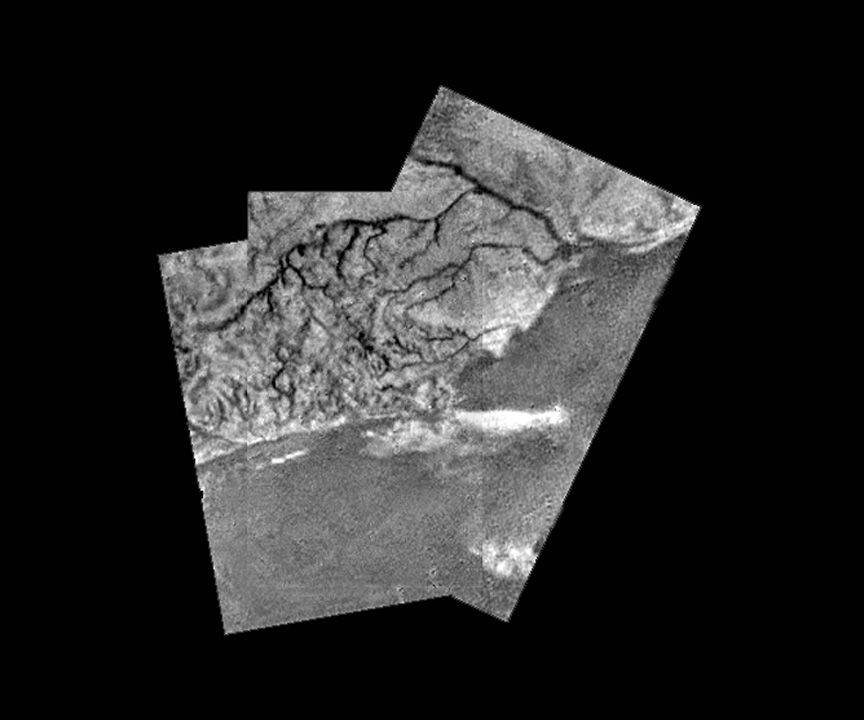
The spacecraft will study the bright and dark surfaces of Dione and Rhea to compare their geological and cratering histories with those of other icy moons. Further analysis of the unique thermal features recently discovered on Mimas will be performed.
Titan and many other moons will be included in flybys also. Titan remains a top priority as scientists hope to catch the moon’s surface features in the act of changing. The spacecraft will look for signs of seasonal climate change such as storms, flooding, or changes in lake levels, as well as evidence of volcanic activity.
All these passes will certainly reveal more secrets of Saturn, its ring system, and its moons. So stay tuned for more amazing photographs and more exciting scientific discoveries over the next three years from Cassini.
To learn more about Cassini’s accomplishments visit the mission’s website at http://saturn.jpl.nasa.gov/.
The images of Cassini
